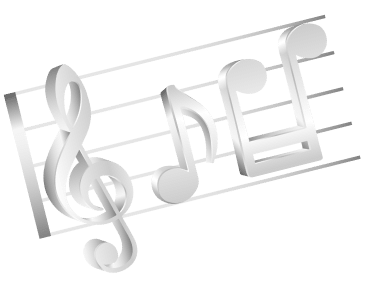




Lesson 4 - Time Signatures and More Rhythmic Exercises







The previous lesson introduced the four basic rhythmic notations: quarter, half, dotted-half, and whole notes. There was also an overview of sitting position, hand posture, and finger numbers. This lesson will will introduce the time signature and bar line, include additional rhythmic exercises, and end with combining notes, finger numbers, and rhythm in short exercises.
Time Signatures and Bar Lines
Time signatures and bar lines are a way that composers and musicians organize music. In any given piece, the beats are organized in groups of equal number, usually 2, 3, or 4. This is visually shown by bar lines, lines that fall between notes and that group the beats into measures of equal length.
Take a look at these quarter notes:

You could easily get lost, not knowing which quarter note you are on! Now take a look at the same number of quarter notes and note how the bar lines are grouping them into equal groups of 4:

That is much easier to read! It is important to note that the bar lines DO NOT CHANGE THE BEAT. These quarter notes are to played exactly the same way as the first example - you must NOT stop at the bar lines!
The bar lines creates measures, or bars. Every measure in a piece must be the same number of beats. This example has 3 measures of 4 beats each.

Now take a look at how the same example can be grouped into 4 measures of 3 beats each:

Now take a look at this last example, where we have 6 measures of 2 beats each:

The composer always marks the number of beats per measure at the beginning of the piece. This is the time signature. The time signature consists of two numbers: the top number represents the number of beats, while the bottom number means the quarter gets the beat.

Now that we know how many beats are in each measure, we can learn to count and clap at the same time. Try the following rhythmic exercises with both clapping AND counting.

(See the double bar line at the end of the exercise? A double bar line signifies the end of a piece!)


In the practice for this lesson, you will be graded on your playing of a few tunes. As you practice these tunes, pay attention to:
Your playing will be graded on note accuracy, rhythm, and continuity (being able to play through without stopping or stumbling).